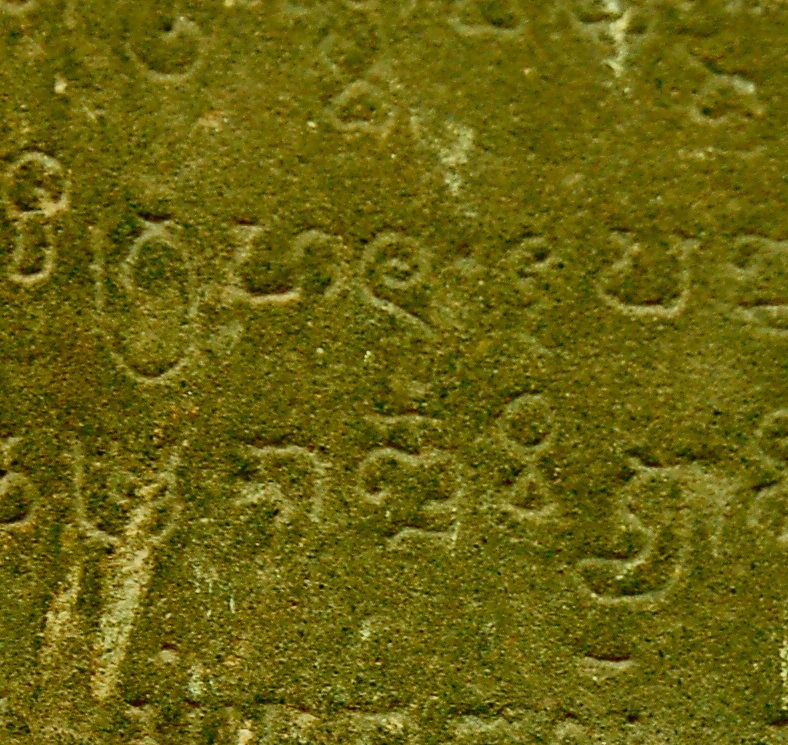Amir Aczel, mathematician and author of a number of semi-popular books on mathematics and science (see, for example, Fermat’s Last Theorem: Unlocking the Secret of an Ancient Mathematical Problem), has just published Finding Zero: A Mathematician’s Odyssey to Uncover the Origins of Numbers.
Aczel’s Finding Zero addresses a very significant historical question: What is the origin of positional decimal notation with zero, and the associated schemes we learn in grade school for doing basic arithmetic? We concur with Aczel that this discovery is clearly one of the most important scientific discoveries of the ancient world, although his characterization “the greatest intellectual achievement of the human mind” is maybe a bit too exultant. Aczel confesses in the Introduction that finding the origin of our decimal numerals, and zero in particular, has been a life-long quest for him, a quest that his taken him on an odyssey to Rome, Greece, India, Thailand, Vietnam, Laos and, ultimately, into the jungles of Cambodia.
Indeed, Aczel’s adventures, as described in the book in detail, read more like an Indiana Jones movie: saying no to countless tourist hawkers, having to pay “extra fees” to airport security agents, having long chats with poorly paid academics and government ministers, scary rides late at night in questionable taxicabs, tours of Angor Wat and other sites, waiting for email responses from total strangers, trudging through jungles, pawing through partial collections of ancient items that had been looted by the Khmer Rouge, and defending his finds against competing archaeologists.

Close-up view of K-127, showing the inscription ‘605’ slightly above and right of center (Credit: Debra Gross Aczel)
Finally, Aczel locates the very artifact that he had been seeking — a priceless stone stele, catalogued as “K-127,” found in a storage shed in Cambodia, with the digits “605” near the bottom (in an ancient script), signifying that it was inscribed in the year 683 CE. The zero itself is a central dot, a common notation at the time (see photo). It is the earliest known stone artifact with a zero (except for zeros in Mayan artifacts, which, because of the design of their number notation, could never be used for efficient position-based arithmetic).
Aczel’s adventures are interspersed with several chapters of highly speculative excursions (ancient sex sculptures, Eastern religion, non-excluded-middle logic and more). The present authors are much less convinced that any of these chapters are relevant to the origin and proliferation of decimal arithmetic, but they are at least entertaining.
While we are very pleased that Aczel was able to locate, and secure for the National Museum of Cambodia, the priceless K-127 artifact, we question whether finding a stele with “605” inscribed on it, dated 683 CE, really brings us close to the origin of decimal arithmetic in general, or to the origin of zero in particular. It seems to us, from the available evidence, that decimal arithmetic is at least several centuries older.
In our American Mathematical Monthly article Ancient Indian Square Roots: An Exercise in Forensic Paleo-Mathematics, we mention the Lokavibhaga, an ancient Jain cosmology manuscript. It is replete with decimal numbers and decimal arithmetic operations (using Sanskrit names and word-symbols for the digits). Near the end of the document, the author gives astronomical observations that enable modern scholars to determine, in two independent ways, that this text was written on 25 August 458 CE (Julian calendar). The document also mentions that it was written in the 22nd year of the reign of Simhavarman, which corresponds to 458 CE. Some additional details are given in Ifrah’s A Universal History of Numbers, pg. 416-418.
In our view, the Lohivibhaga establishes beyond any reasonable doubt that decimal arithmetic was known in India at least by 458 CE.
In our Monthly paper, we also mention several sophisticated square root algorithms and decimal calculations that appear in ancient Indian sources, including the Aryabhatiya (writings of famed Indian mathematician Aryabhata), dated to 500 CE, and the Bakhshali manuscript, which Japanese scholar Takao Hayashi concluded was a seventh century copy of an even earlier original. Surprisingly accurate square root values are presented in even earlier manuscripts, dated to 0 CE and before, suggesting that decimal arithmetic may well have been employed in their calculation.
So it appears to us that there is little doubt that our system of positional decimal notation with zero, and associated schemes for arithmetic, had been discovered in India at least by the fifth century CE, and likely even earlier.
But it is very nice that these ancient documents are now confirmed by a rock stele dated to the seventh century. We congratulate Aczel on his find.